Disclosure: This article contains affiliate links. We may earn a commission from purchases at no extra cost to you, which helps our travel content.
After fifteen years in the vibrant streets of Rio, returning to North America always feels like slipping into an old, comfortable sweater—familiar yet somehow new. My recent autumn weekend in Boston reminded me why this city holds a special place for history buffs like myself. While thousands shuffle along the brick-lined Freedom Trail each day (worthy as it is), there's a richer, more intimate Boston waiting just a few blocks away. As someone who's built a career connecting people through authentic experiences, I've found that the real magic of Boston isn't in its most photographed landmarks, but in those hidden corners where history whispers rather than shouts. Pack a light jacket, grab your partner's hand, and let's explore seven historical gems that most tourists—and surprisingly, many locals—have never discovered. These are the places where you'll find yourselves alone with history, sharing moments that become the stories you'll tell for years to come.
1. The Vilna Shul: Boston's Last Immigrant-Era Synagogue
Tucked away on Phillips Street on the north slope of Beacon Hill sits a weathered brick building that nearly became another casualty of urban renewal. The Vilna Shul, Boston's last remaining immigrant-era synagogue, stands as a testament to the waves of Jewish immigrants who made this neighborhood home in the early 20th century.
I discovered this gem during my second day in Boston when an unexpected rain shower forced me to seek shelter. What I found inside was far more valuable than mere protection from the elements. The building, constructed in 1919, features stunning original murals and hand-painted decorations that miraculously survived decades of neglect when the building stood abandoned.
What makes this site particularly special is how it contrasts with the polished historical narrative often presented elsewhere in Boston. Here, you'll find history unvarnished—wooden benches worn smooth by generations of worshippers, paint gently peeling from walls that have witnessed countless prayers.
During my visit, an elderly volunteer named Morris shared stories of his grandfather attending services here, describing how the neighborhood once buzzed with Yiddish conversations and kosher markets. His tales transported me back to a Boston rarely mentioned in guidebooks—a city of immigrants striving to maintain their cultural identity while embracing their new American home.
The second-floor sanctuary, with its beautiful Torah ark and women's balcony, offers a peaceful space for reflection, regardless of your religious background. It's a place that invites quiet conversation and connection—perfect for couples seeking meaningful experiences beyond typical tourist attractions.

💡 Pro Tips
- Visit during their limited open hours (Thursday-Friday and Sunday afternoons) to ensure access
- Ask about their cultural events calendar—they often host small concerts and lectures that provide even deeper context
- Donation-based admission makes this accessible for any budget
2. Copp's Hill Burying Ground's Secret Corners
Yes, Copp's Hill Burying Ground is technically on the Freedom Trail, but I promise you—almost nobody ventures to its hidden northern corner, which holds some of the most fascinating stories in Boston's history.
On my first morning in Boston, I arrived at this hilltop cemetery just after sunrise, armed with a steaming cup of coffee from a nearby North End café. While a few early-rising tourists snapped photos of the informational plaques near the entrance, I wandered toward the far corner overlooking the harbor.
There, among lichen-covered headstones dating back to the 1600s, I found the unmarked graves of an estimated 1,000 free and enslaved Black Bostonians who helped build this city. Unlike the grand markers for wealthy merchants nearby, these individuals rest in what was once dismissively called the 'Negro Burial Ground'—a powerful reminder of Boston's complicated history with race and equality.
Nearby stands the headstone of Prince Hall, a Revolutionary War veteran and founder of Black Freemasonry in America. His grave has become a pilgrimage site for Masonic lodges across the country, often decorated with coins and tokens left by visitors paying respect.
What makes this corner of Copp's Hill special is how it challenges the simplified narrative of Boston's revolutionary history. Here, you confront the paradox of a city fighting for liberty while many of its residents remained enslaved.
I spent nearly two hours in this peaceful corner with just my field guide, tracing weathered inscriptions and contemplating the lives represented by each stone. The morning fog rolling in from the harbor created an atmosphere that felt appropriately reverent.
For couples interested in photography, the morning light here creates stunning opportunities. The weathered slate headstones, some featuring elaborate winged death's heads and soul effigies, make for hauntingly beautiful images against the backdrop of autumn foliage.
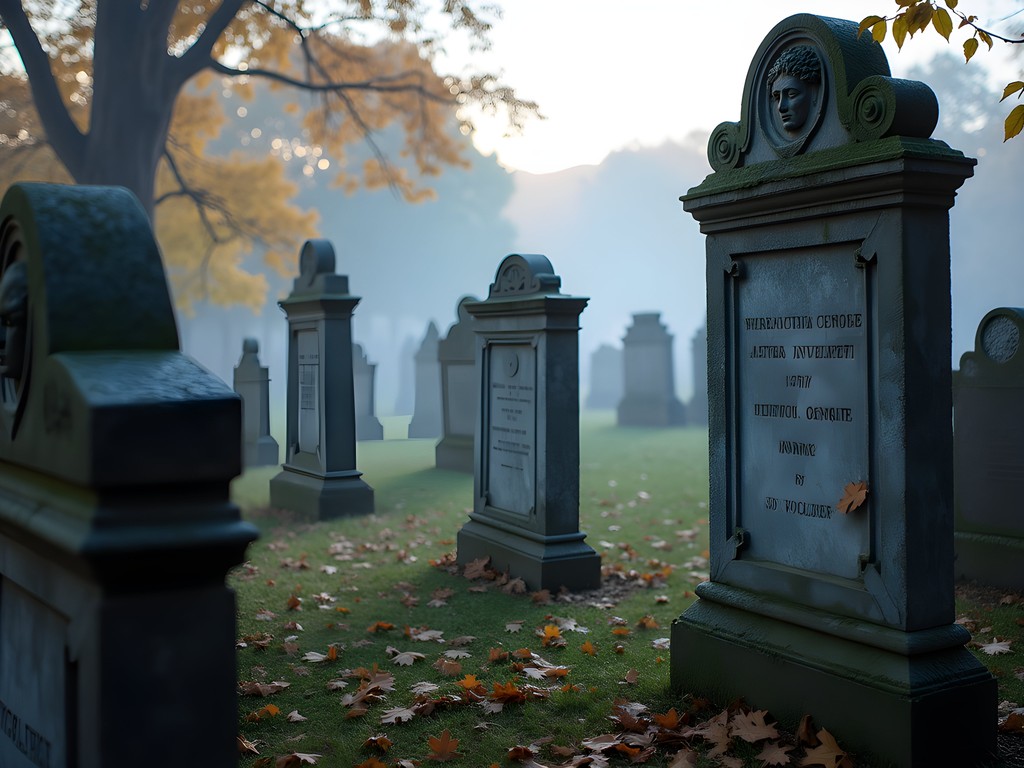
💡 Pro Tips
- Visit early morning or near sunset when the light is most atmospheric and crowds are thinnest
- Look for the unusual carved motifs that reflect changing attitudes toward death over the centuries
- Bring a small notebook to make gravestone rubbings of particularly interesting designs (but be gentle!)
3. The West End Museum: Remembering a Lost Neighborhood
Few visitors to Boston realize that an entire neighborhood was essentially erased from the city's map in the name of urban renewal. The West End, once a vibrant immigrant community of Italians, Jews, Irish, and Eastern Europeans, was demolished in the late 1950s, displacing thousands of residents and destroying countless family businesses.
The West End Museum, housed in a modest storefront on Staniford Street, preserves the memory of this vanished neighborhood through photographs, oral histories, and salvaged artifacts. Walking through the door feels like stepping into someone's cherished family album.
During my visit, I was fortunate to meet Maria, a volunteer whose grandmother had been forced to leave her West End apartment with just two weeks' notice. As she guided me through exhibits featuring black-and-white photographs of narrow streets filled with pushcarts and children playing, I couldn't help but draw parallels to the favelas of Rio, where community bonds are similarly strong despite economic challenges.
"They called it a slum," Maria told me, gesturing toward photographs of immaculately kept apartments with lace curtains and polished furniture. "But these people took pride in their homes."
What makes this museum particularly special for couples is its intimate scale. Unlike Boston's larger museums where you might feel rushed from exhibit to exhibit, here you can linger, discuss, and reflect together on the human cost of progress and the meaning of community.
One particularly moving exhibit features a recreation of a typical West End apartment kitchen, complete with period furnishings and family photographs. Standing in this space, you can almost hear the conversations that might have taken place around the small table—discussions of old-world traditions, children's futures, and the American Dream.
Before leaving, I purchased a copy of the museum's cookbook, which preserves recipes from the neighborhood's diverse cultural traditions. That evening, my Airbnb host kindly allowed me to prepare an Italian-Jewish fusion dish that would have been right at home in the West End's cultural melting pot. The cooking journal I always carry with me gained another precious entry—a taste of a Boston that no longer exists except in memory.
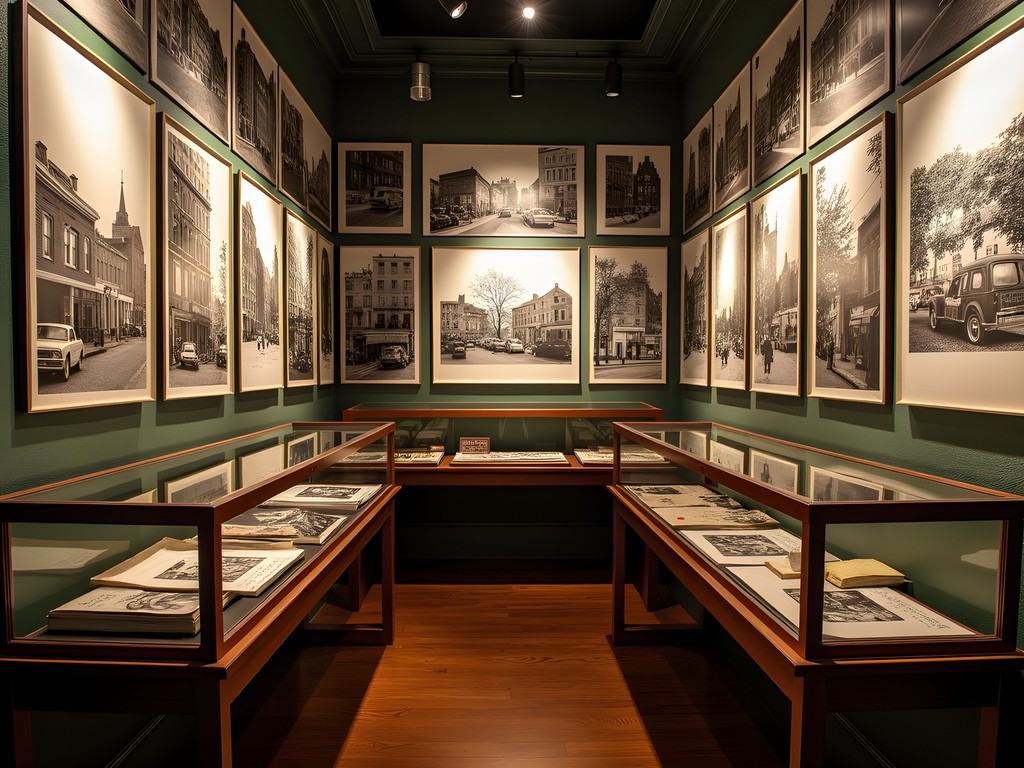
💡 Pro Tips
- Check the museum's calendar for special events—they often host former residents sharing stories
- Allow at least 90 minutes to fully appreciate the exhibits and oral histories
- Don't miss the short documentary film that runs on a loop in the back room
4. The Mapparium: Step Inside a Glass Globe
Hidden within the Mary Baker Eddy Library near Symphony Hall lies one of Boston's most unusual attractions: a three-story stained glass globe that you can actually walk through. The Mapparium, completed in 1935, represents the world as it existed then—a fascinating time capsule of pre-World War II geopolitics.
What makes this site truly special isn't just its visual impact (though that's certainly breathtaking) but its acoustic properties. The perfectly spherical chamber creates what engineers call a "whispering gallery" effect. Stand at one end of the 30-foot glass bridge that bisects the globe, and you can whisper secrets to your partner standing at the opposite end—your words will travel perfectly along the curved surface, inaudible to anyone standing between you.
This peculiar acoustic phenomenon makes the Mapparium an unexpectedly romantic spot. During my visit, I watched as several couples discovered this feature, their faces lighting up with childlike wonder as they shared private messages across the globe.
Beyond the novelty, there's something profoundly moving about standing inside this representation of our world. The map's outdated political boundaries—showing a colonial Africa, an undivided Korea, and the Soviet Union at its height—provide a powerful reminder of how much our world has changed in less than a century.
The guided presentation includes a fascinating light show that highlights how our understanding of the world has evolved since the map's creation. It's a perfect conversation starter for couples interested in history, politics, or simply contemplating our place in the world.
After emerging from the globe, I spent some time in the library's research room, where visitors can explore the fascinating life of Mary Baker Eddy, founder of Christian Science and one of America's most influential female religious leaders. Whether or not you share her spiritual views, her story as a 19th-century female publisher and entrepreneur is remarkable.
Before leaving, I browsed the gift shop and found a beautiful world globe that now sits on my desk in Rio, reminding me daily of this hidden Boston treasure and the perspective it offers. Like the Mapparium itself, it helps me visualize the connections between distant places that have shaped my own journey between Canada, Brazil, and beyond.

💡 Pro Tips
- Purchase tickets in advance as the timed entry tours can sell out, especially on weekends
- Position yourself at opposite ends of the bridge from your partner to experience the acoustic phenomenon
- Photography is prohibited inside the globe, so be present and absorb the experience fully
5. The Gibson House Museum: Victorian Boston Frozen in Time
Nestled among the luxury apartments and designer boutiques of Back Bay stands a perfectly preserved time capsule of Victorian Boston. The Gibson House Museum, a four-story brownstone on Beacon Street, remains virtually unchanged since 1800s—right down to the original furnishings, family photographs, and even half-used bars of soap in the bathroom.
What makes this house museum different from others I've visited around the world is its remarkable authenticity. This isn't a recreation with period-appropriate furniture; it's the actual home of the Gibson family, preserved by the last family member who lived here until 1954 and stipulated that nothing be changed after his death.
The moment I stepped through the front door, the scent of old wood, leather-bound books, and the faintest hint of coal smoke transported me to another era. Our small tour group (never more than eight people) was led by a knowledgeable guide who shared not just historical facts but intimate details of the Gibson family's daily life.
The kitchen, located in the basement as was typical in these townhouses, remains equipped with its original coal-burning stove and ice box. As someone who's spent years exploring culinary traditions, I was fascinated by the elaborate systems required to prepare even simple meals in this era. It reminded me of the wood-burning stoves still used by some families I've visited in rural Brazil, where cooking remains a labor-intensive art.
What particularly captivated me was the servants' quarters tucked away on the top floor. These modest rooms tell the often-overlooked stories of the Irish immigrant women who made the Gibson family's comfortable lifestyle possible. Their presence is evidenced by personal items—a rosary hanging by a narrow bed, a faded photograph of the Irish countryside—humanizing these essential but historically invisible workers.
For couples interested in interior design, architecture, or simply glimpsing authentic domestic life from another era, the Gibson House offers an intimate experience far removed from Boston's more trafficked historical sites. The ornate parlor, with its original silk wallpaper and family piano, practically begs visitors to imagine the soirées and social gatherings that once animated the space.
After the tour, I recommend walking a few blocks to the Boston Public Garden with a travel sketchbook to capture impressions of both Victorian and contemporary Boston. The contrast between the preserved interior world of the Gibson House and the modern city outside creates a thought-provoking juxtaposition.

💡 Pro Tips
- Reservations are essential as tours are small and limited to specific times
- Wear comfortable shoes without sharp heels as you'll be navigating original wooden floors and narrow staircases
- Visit the nearby Boston Athenaeum afterward for a complementary glimpse into Boston's intellectual history
6. Brook Farm: Transcendentalist Utopia in West Roxbury
Most visitors to Boston never venture to its outer neighborhoods, but a 25-minute drive from downtown leads to one of the most philosophically significant sites in American history. Brook Farm in West Roxbury was once home to an experimental utopian community founded by Transcendentalist thinkers in 1841.
This former dairy farm attracted luminaries including Nathaniel Hawthorne (who based his novel "The Blithedale Romance" on his experiences here), Margaret Fuller, and Ralph Waldo Emerson. Their radical experiment attempted to balance intellectual pursuits with physical labor, creating a more equitable society where all work—whether farming or teaching—was equally valued.
Today, the 179-acre site is a National Historic Landmark, though little remains of the original buildings. What makes this site special is the opportunity to walk the same meadows and woodland paths where these revolutionary thinkers debated philosophy, gender equality, and social reform nearly two centuries ago.
On a crisp autumn afternoon, I followed the interpretive trail through golden-leaved trees, stopping at markers that explained different aspects of the community's daily life and ultimate dissolution. The experience was made infinitely richer by my historical guide, which provided context for understanding how the ideas incubated at Brook Farm continue to influence American thought today.
What struck me most powerfully was how contemporary many of the community's concerns feel. Their questions about work-life balance, sustainable agriculture, and creating meaningful connection in an increasingly industrial world mirror conversations happening in coffee shops and community centers across the globe today.
For couples interested in philosophy, literature, or alternative social movements, Brook Farm offers a chance to discuss big ideas while enjoying a peaceful nature walk. The site's remoteness means you'll likely have the trails largely to yourselves—a rarity in tourist-heavy Boston.
After exploring the farm, I recommend continuing the transcendentalist theme by visiting nearby Walden Pond in Concord, where Henry David Thoreau conducted his famous "experiment in essential living." Together, these sites offer a profound look at America's first homegrown philosophical movement and its enduring legacy.
The contrast between Brook Farm's idealistic communal vision and our modern individualistic society provided my partner and me with hours of thoughtful conversation. Sometimes the most meaningful travel experiences come not from what you see, but what you contemplate while seeing it.

💡 Pro Tips
- Download the interpretive trail guide from the Massachusetts DCR website before visiting as on-site materials are limited
- Combine with a visit to nearby Forest Hills Cemetery, another hidden gem with connections to transcendentalist figures
- Wear sturdy walking shoes as the terrain can be uneven, especially after rain
7. The Nichols House Museum: A Woman's World on Beacon Hill
When most visitors explore Beacon Hill's cobblestone streets, they focus on the grand homes of wealthy merchants and politicians. But tucked among these imposing residences sits a more modest townhouse with an extraordinary story. The Nichols House Museum at 55 Mount Vernon Street preserves the home of Rose Standish Nichols, a remarkable woman who defied the constraints of her Victorian upbringing to become a professional landscape architect, suffragist, and pacifist.
Unlike many historic homes that showcase male achievement, this museum celebrates a fiercely independent woman who never married, traveled extensively throughout Europe, and hosted influential salon gatherings where Boston's intellectual elite debated the pressing issues of the early 20th century.
My tour began in the formal parlor, where Rose held her famous "teas" that were actually forums for discussing women's rights, international peace initiatives, and artistic movements. Our guide pointed out how Rose had carefully curated every element of the space—from the European antiques to the strategic seating arrangement—to facilitate meaningful conversation among her guests.
What particularly moved me was Rose's study, filled with her landscape design drawings, correspondence with international peace organizations, and books on subjects ranging from Italian garden design to political philosophy. As someone who reinvented his own life mid-career, I felt a kinship with this woman who carved out a professional identity at a time when few women worked outside the home.
The kitchen tells another fascinating story through its modernizations. Rose installed then-cutting-edge technologies like an electric refrigerator and a gas stove, embracing innovation while preserving tradition in other parts of the home. It reminded me of my own mother's kitchen in Kitchener, where her traditional Portuguese cooking methods coexisted with modern appliances.
For couples interested in women's history, interior design, or simply glimpsing a more personal, intimate side of Boston's past, the Nichols House offers a refreshing alternative to the male-dominated historical narratives that dominate most heritage sites.
After your visit, I recommend stopping at the nearby Paramount bakery on Charles Street for coffee and pastries. Bring along a pocket notebook to jot down reflections about which elements of Rose's independent lifestyle and aesthetic sensibilities might inspire your own home and life choices.
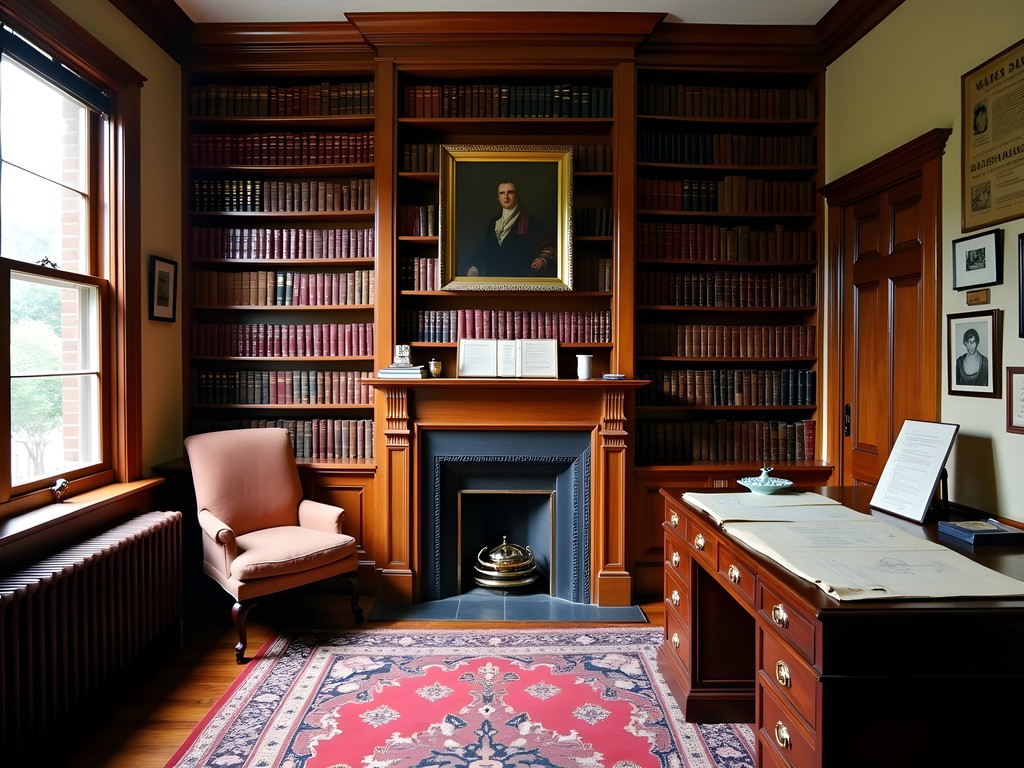
💡 Pro Tips
- Book the first tour of the day for the most intimate experience
- Look closely at the Japanese prints in the dining room—Rose was an early collector of Asian art
- Ask your guide about the women's suffrage meetings held in the home
Final Thoughts
As I stood on the roof deck of my Beacon Hill Airbnb on my final evening, watching the sunset paint the Charles River golden, I reflected on how these hidden historical sites had revealed a more nuanced, human side of Boston than I'd experienced on previous visits. The city's revolutionary spirit lives not just in famous battlegrounds and politicians' homes, but in synagogues that sheltered immigrants, Victorian parlors where women planned for suffrage, and experimental farms where idealists imagined better ways to live together. The real magic of exploring these lesser-known sites with someone special is the conversations they inspire—about history, yes, but also about your own values, dreams, and the kind of legacy you hope to leave. So venture beyond the red brick line, follow those quiet side streets, and discover the Boston that most visitors never see. The stories you'll find there—and the memories you'll create together—are the souvenirs that truly last a lifetime.
✨ Key Takeaways
- Boston's most meaningful historical experiences often lie beyond the famous Freedom Trail
- Smaller museums and sites offer more intimate, personal connections to the past
- Visiting in autumn provides the perfect combination of comfortable temperatures and smaller crowds
- These hidden gems spark conversations that can deepen your connection as a couple
📋 Practical Information
Best Time to Visit
September-November for comfortable temperatures and beautiful foliage
Budget Estimate
$400-600 for a weekend (accommodations, meals, admissions)
Recommended Duration
2-3 days
Difficulty Level
Easy

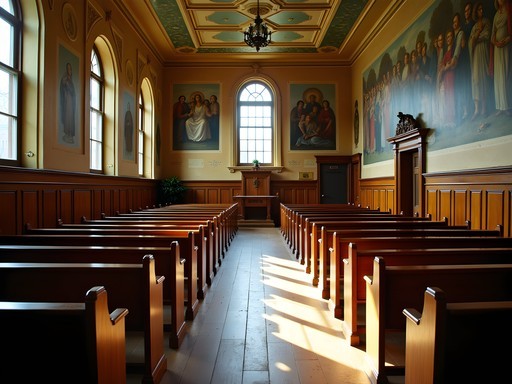

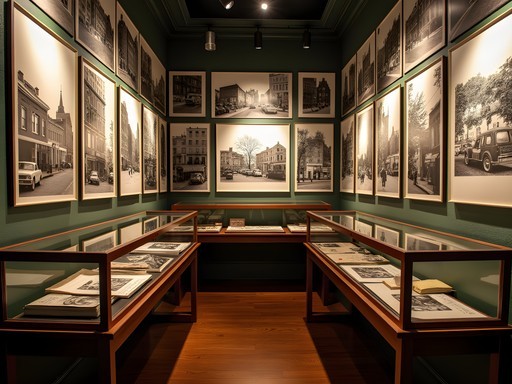

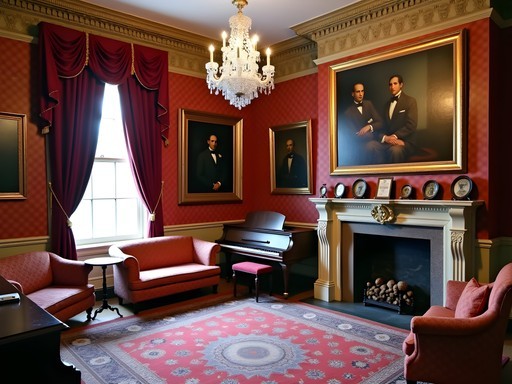




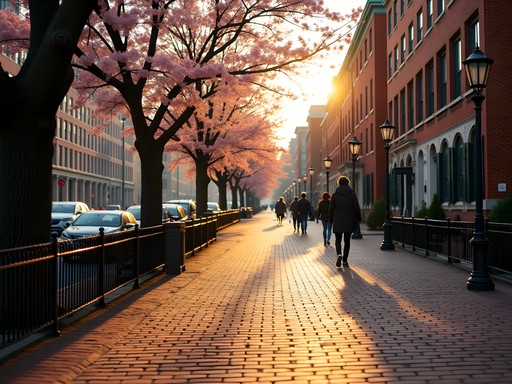


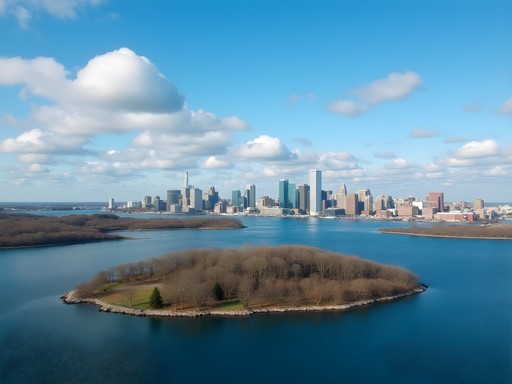
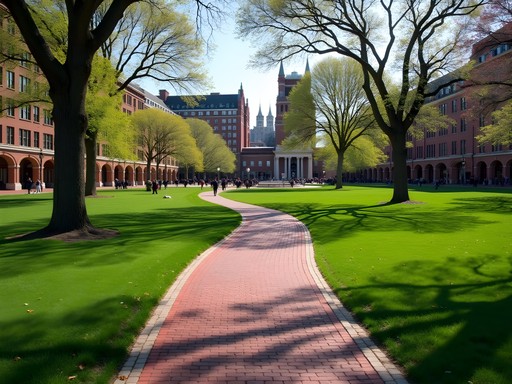
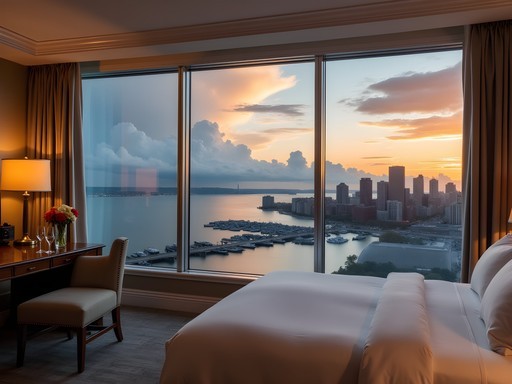

Comments
springbackpacker
Any recommendations for good coffee shops near these spots? Planning to hit several of these in one day and will need caffeine!
Frank Garcia
Try Thinking Cup near Boston Common - great spot to start before heading to these sites. There's also a cozy place called Caffe Vittoria in North End if you're near Copp's Hill.
oceanmood
Just got back from Boston and used this guide - thank you SO MUCH! The West End Museum was such a powerful experience. I had no idea about that neighborhood's history. The before and after photos broke my heart. Also loved the Mapparium - totally worth seeking out!
mountaindiver
I've done the Freedom Trail twice but never heard of the Vilna Shul. Is it walkable from the main tourist areas? And do they offer guided tours or is it self-guided?
oceanmood
Not the author but I was just there! It's totally walkable from Beacon Hill or the North End - maybe 10-15 mins. They have both self-guided options and scheduled tours. The volunteer who gave our tour was incredible - really brought the immigrant experience to life.
Douglas Bradley
Tyler, this is a fantastic curation of Boston's lesser-known historical treasures. I'd add one more to your list: the Gibson House Museum in Back Bay. It's a perfectly preserved Victorian rowhouse from the 1860s, essentially frozen in time. The guided tour offers an intimate glimpse into 19th-century Boston upper-class life. What makes it particularly special is how untouched it feels - almost as if the family just stepped out for the afternoon. I visited during my research for a piece on preserved historical homes and found it far less crowded than the more famous sites. I used my Boston guidebook to find it, which has an excellent section on these hidden historical gems.
citylife
Heading to Boston next week - how accessible is Copp's Hill Burying Ground? Is it open year-round? Any specific sections I should look for?
Tyler Gutierrez
It's open year-round from dawn till dusk and completely free! Look for the unmarked slaves' section in the back corner - there are some informational plaques now that tell the forgotten stories. Also check out the headstones with bullet marks from British soldiers who used them for target practice!
citylife
Thanks so much! That's exactly the kind of hidden history I'm interested in.
islandninja
Great post! Love finding the hidden gems.
Frank Garcia
Really appreciate this alternative perspective on Boston's history. I visited the Mapparium last year and it was genuinely one of the most unique attractions I've experienced. The acoustics inside that glass globe are mind-blowing - you can whisper on one side and someone across the sphere will hear you perfectly. Worth noting they don't allow photos inside, which I think actually enhances the experience. The West End Museum was also fascinating - such a poignant reminder of how urban renewal projects can erase entire communities.
springbackpacker
Is the Mapparium worth the entry fee? I'm on a tight budget but it sounds cool!
Frank Garcia
Absolutely worth it! It's only about $6 if I remember correctly, and it's such a unique experience. You get a short presentation too about its history and construction.
greenclimber
This is exactly what I've been looking for! So tired of the same old Freedom Trail recommendations. The Vilna Shul looks amazing - definitely adding it to my list for next month's trip!
starbuddy
Love these off-the-beaten-path suggestions! Is the Vilna Shul open daily? Planning a trip in November and wondering if I need to book ahead.
mountainlover
Not Tyler, but I checked after reading this - they're open Sunday-Thursday but hours vary. Definitely check their website and reserve tickets ahead, especially for tours!
starbuddy
Thanks for the info! Will do that.
Sophia Gomez
Tyler, this is exactly what I needed! I'm heading to Boston next month for a conference and will have a free weekend. The West End Museum sounds fascinating - I love learning about urban renewal and its impacts. I visited Boston years ago and only did the standard tourist route. I'd add the Gibson House Museum to your list - it's this perfectly preserved Victorian rowhouse in Back Bay that feels like stepping into a time capsule. I used my city guidebook to find it last time and it was a highlight!
Tyler Gutierrez
Great suggestion, Sophia! The Gibson House is definitely a hidden gem. If you're into urban renewal history, make sure to ask about the West End's connection to Government Center at the museum - fascinating and heartbreaking story there.
Venture X
Premium card with 2X miles, $300 travel credit, Priority Pass